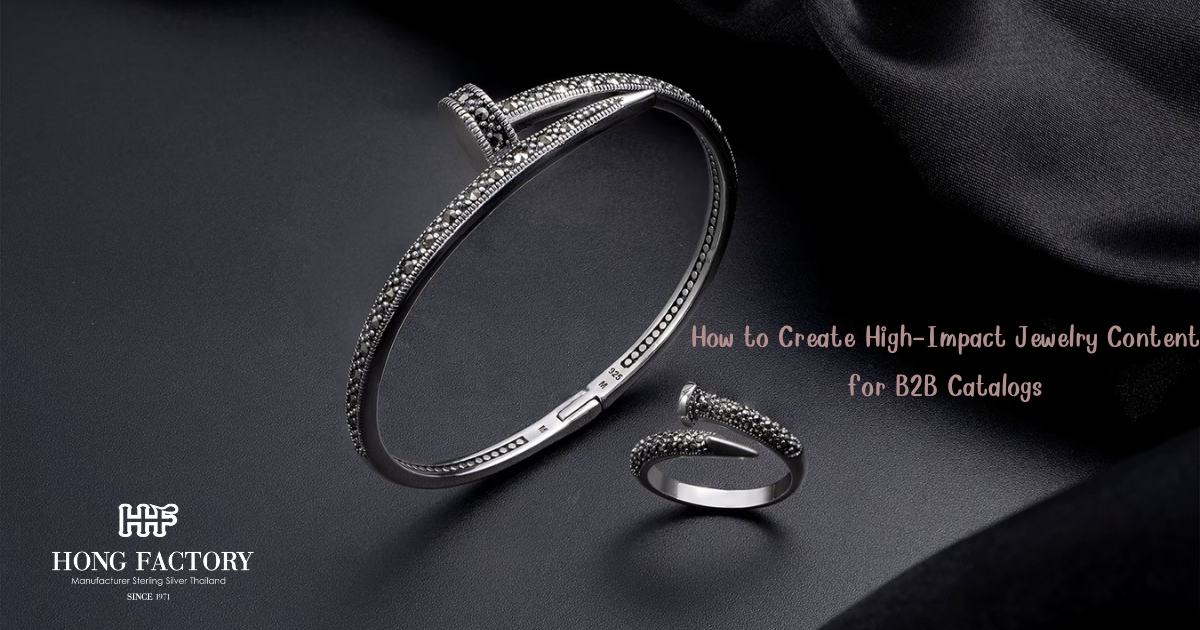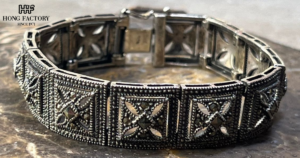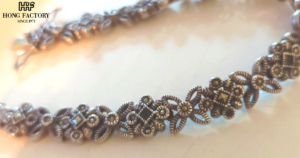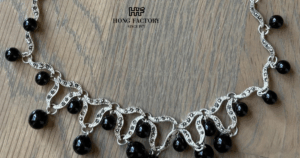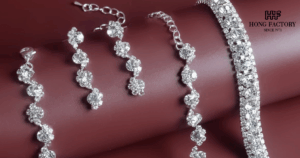In the B2B jewelry industry, your catalog isn’t just a list it’s a sales engine. Whether it’s digital or print, your catalog content must do more than display items. It needs to spark buyer interest, clearly communicate value, and guide purchasing decisions with minimal friction.
In a space where margins matter and decisions are fast-paced, creating high-impact catalog content is essential. Here’s how to create jewelry content that converts browsers into buyers wholesale style.
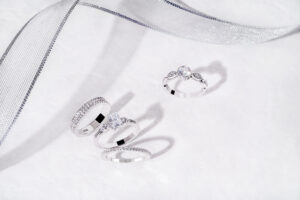
How to Create High-Impact Jewelry Content for B2B Catalogs
1. Understand Your B2B Audience
Before you write a single line or take a single photo, ask: who is this catalog for?
Typical B2B jewelry buyers include:
- Boutique owners
- Online resellers
- Large department store category managers
- Private label brand developers
These buyers need clear specs, fast decision-making tools, and confidence in your reliability.
Key Buyer Needs:
- Quick understanding of design, material, and pricing
- Ability to filter or compare SKUs
- Clear visual representation (especially scale and finish)
- Ordering instructions and lead time
Design your content to serve these exact needs not just to showcase beauty.
2. Structure Your Catalog for Ease and Speed
Break your catalog into logical, browsable sections:
- By product type (e.g., rings, earrings, bracelets)
- By collection or theme (e.g., Vintage, Minimalist, Bridal)
- By material or finish (e.g., Sterling Silver, Gold Vermeil, Marcasite)
Use consistent section headers, page layouts, and product info blocks.
Must-Have Elements per SKU:
- Product name or code
- Clear product image (white background + lifestyle optional)
- Size/dimensions in mm or cm
- Material & finish (e.g., 925 silver, rhodium-plated)
- Available colors or stones
- MOQ (minimum order quantity)
- Lead time (production or shipping)
Optional but powerful:
- Suggested retail price (SRP)
- Notes on best-sellers or bundle options
3. Write Product Descriptions with Precision
B2B buyers aren’t browsing for poetry they want clarity and utility.
Good:
“925 Sterling Silver ring with round-cut marcasite, oxidized finish. Available in sizes 6–9. MOQ: 5 pcs/design.”
Better:
“Classic vintage-inspired ring in solid 925 silver featuring hand-set round marcasite stones. Oxidized for antique effect. Sizes 6–9. Ideal for bridal and gift collections. MOQ: 5 pcs/design. Lead time: 30 days.”
Tips:
- Use bullets for readability
- Start with metal & stones
- Include styling or occasion suggestions
- Highlight production strengths (e.g., hand-set, cast not plated)
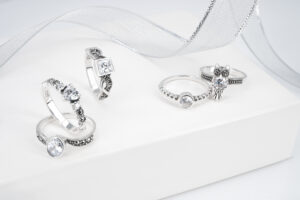
4. Use High-Quality, Consistent Photography
Images matter even more in wholesale. Your buyers often can’t see or touch the product.
Include:
- Studio shots on white background (all angles)
- Scale references (e.g., next to ruler or worn on model)
- Optional: lifestyle/editorial shots for marketing use
Use consistent lighting and angles across all items. Group photos with matching pieces to help buyers build sets.
5. Highlight Best-Sellers and Proven Performers
B2B buyers love confidence help them reduce risk.
- Mark SKUs as “Best-Seller,” “New Arrival,” or “Top Performer”
- Share reorder data or regional trends (“Popular in EU boutiques”)
- Offer bundled sets of your top 3–5 SKUs
Confidence in catalog content drives faster ordering decisions.
6. Create a “Quick Buy” Page or Index
Save buyers time with:
- A grid or table of SKUs, images, and pricing on one sheet
- QR codes or hyperlinks to digital order forms
- Exportable order sheets (Excel or Google Sheets)
This helps wholesale buyers move from browsing to bulk ordering without friction.
7. Support with Storytelling—Briefly
Your catalog should include:
- A 1-page brand introduction (highlighting craftsmanship, sourcing, or sustainability)
- 1-page collection intros for themed capsules
- Optional quote from founder, designer, or artisan
Keep it visual and concise. Let your catalog double as both a tool and a representation of your brand DNA.
8. Localize Content if Selling Internationally
Use metric measurements (mm, cm) and international metal purity language (e.g., 925 silver). Include multilingual versions or ordering notes if your market spans multiple languages.
Make it easy for global buyers to understand and trust what they’re getting.
9. Make It Shoppable (If Digital)
If your catalog is digital (PDF or flipbook):
- Add clickable SKUs that link to ordering forms or product pages
- Use embedded videos or 360-degree views for hero products
- Enable “Add to Quote” or “Request Sample” buttons
The fewer clicks between browsing and buying, the better.
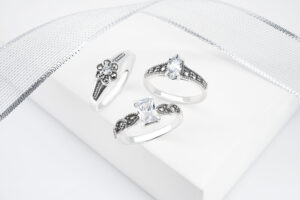
10. Test and Refine Your Catalog Regularly
After each sales season:
- Ask for feedback from buyers: what worked? what was missing?
- Track top-clicked SKUs and best-selling sections
- Update photos, pricing, or formatting for clarity
A B2B catalog isn’t static it’s a live sales tool that gets smarter each cycle.
Function Meets Style
Creating high-impact jewelry content for B2B catalogs is about marrying design with function. The content must answer real buyer questions before they even ask them, streamline the decision-making process, and reinforce your brand’s professionalism.
When done well, your catalog becomes more than a product showcase it becomes a trusted tool that accelerates your sales cycle and elevates your wholesale relationships. So make every page count. Make it beautiful. But above all, make it easy to buy from you.
